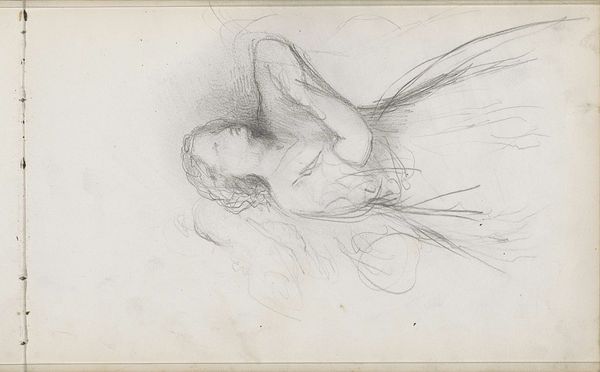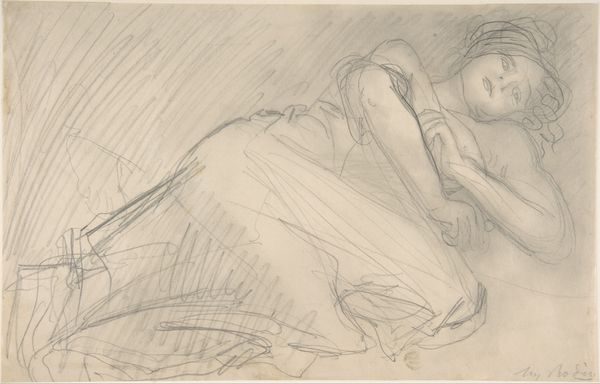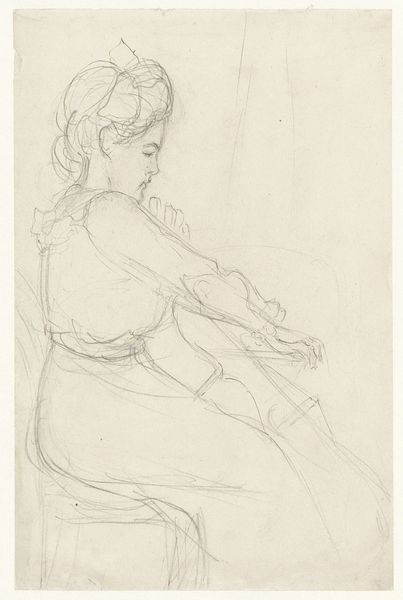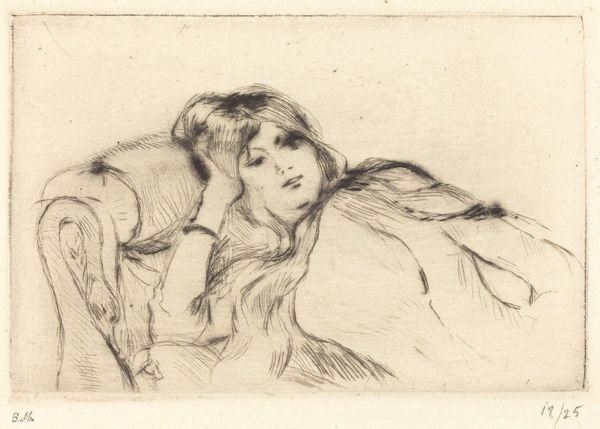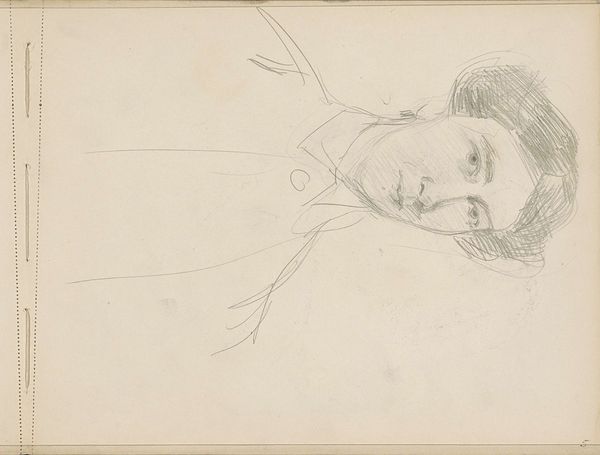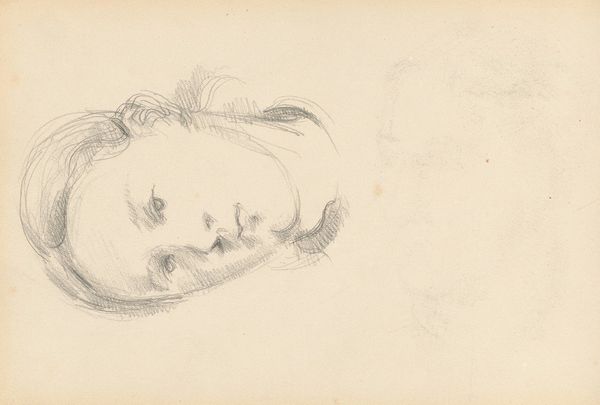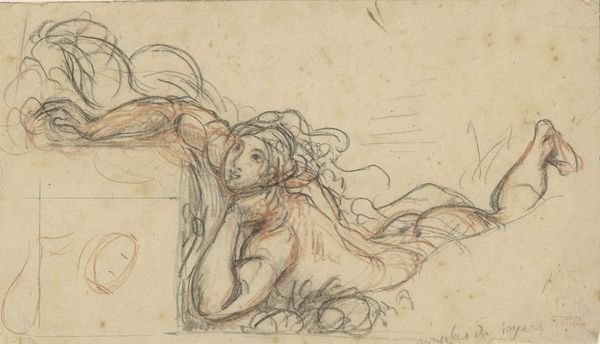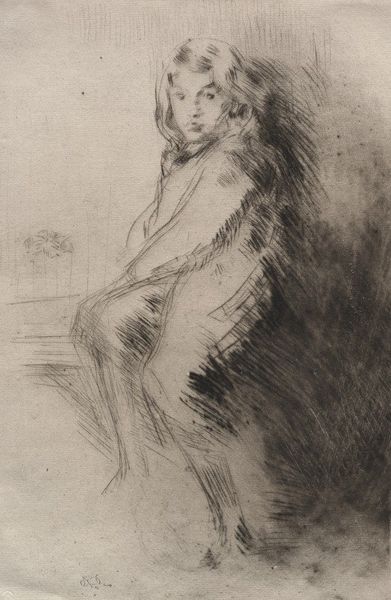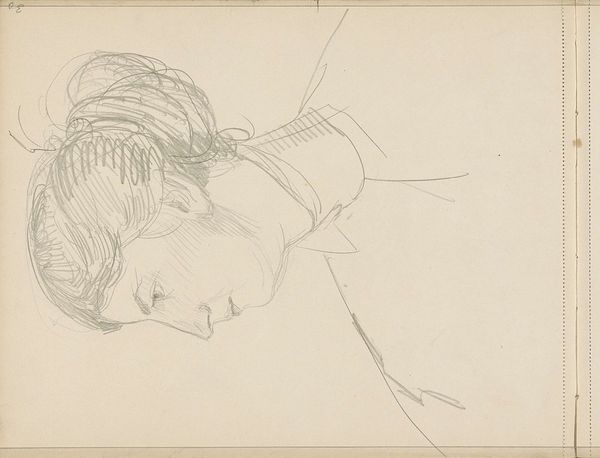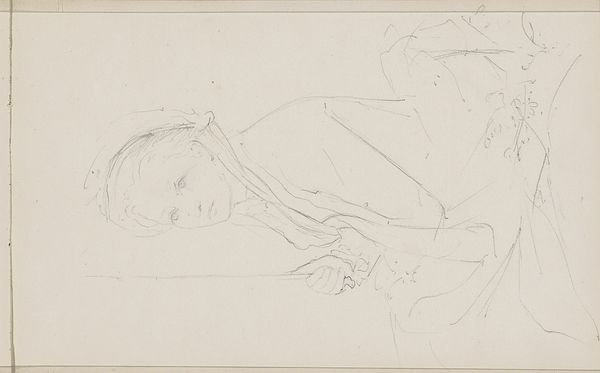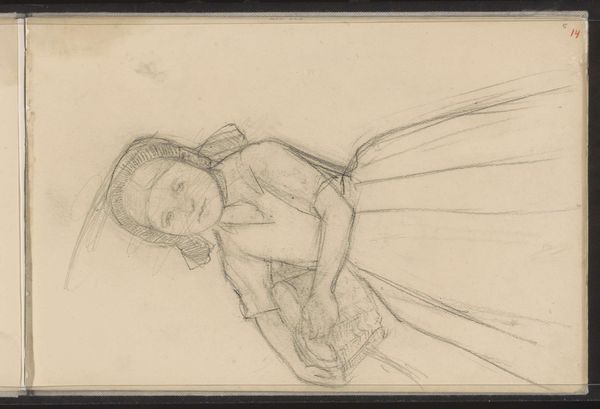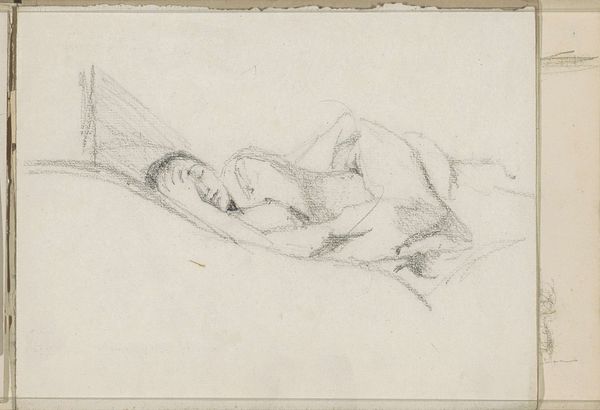
drawing, pencil
#
portrait
#
drawing
#
pencil sketch
#
pencil
#
pencil work
#
history-painting
#
academic-art
#
sword
Copyright: Rijks Museum: Open Domain
Curator: The subtle greys of this pencil sketch really set the mood, don't they? It’s titled "Copy after Raphael's 'The Saint Catherine of Alexandria,'" created by Maria Vos in 1867. Editor: There’s a wistful quality, almost a dreamlike state suggested by the soft lines. The subject's head is tilted downward in quiet contemplation. It feels like a preparatory study, catching a fleeting moment of introspection. Curator: That's perceptive. Copies like these were crucial in academic art circles. Artists honed their skills by recreating the masters' works, absorbing their techniques and ideals. It's more than just a simple reproduction; it's an active engagement with Raphael’s vision. Editor: So, it is less about devotional practice and more about political awareness and training? The act of copying places Vos within a tradition and legitimizes her practice within a male-dominated artistic sphere. Saint Catherine herself is an interesting symbol too – a figure of wisdom and resistance. Is that the hilt of her sword we see at the base? Curator: Absolutely. The sword represents her martyrdom and her defence of Christian belief. And the very act of reproducing Raphael, the embodiment of High Renaissance ideals, suggests Vos saw great worth in aligning with a certain art-historical narrative. Remember that academic art dictated what was of ‘value’ for much of the 19th century. Editor: Interesting. I find myself more drawn to the medium. The deliberate, yet flowing nature of the pencil lends itself well to the contours of the human figure. The slight imperfections, the tentative strokes, reveal the hand of the artist in a way that a more finished work might conceal. Curator: I see your point. The pencil lends the artwork an intimacy; an unvarnished look that distances itself from the "high polish" favored in academic circles. Even in replicating a well-known work, Maria Vos still subtly brings her own distinct style to bear. Editor: Indeed. It encourages us to consider the context of its creation: a woman artist engaging with, and perhaps subtly subverting, the artistic conventions of her time. It invites us to appreciate the skill while also questioning the historical narratives that art embodies and reproduces. Curator: A fitting point to conclude on. It seems we both found something thought-provoking in this pencil study—a testament to its nuanced layers of meaning.
Comments
No comments
Be the first to comment and join the conversation on the ultimate creative platform.
